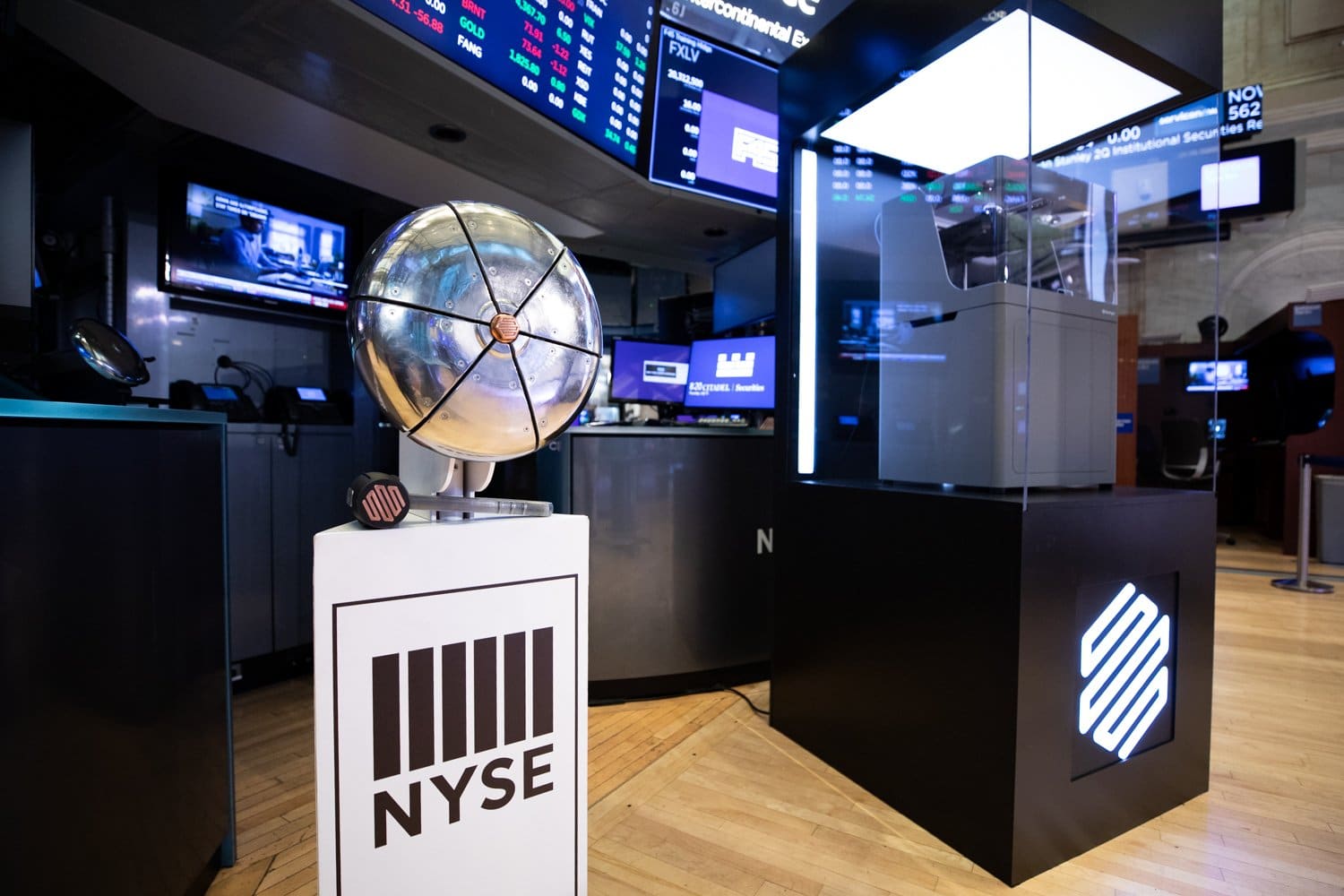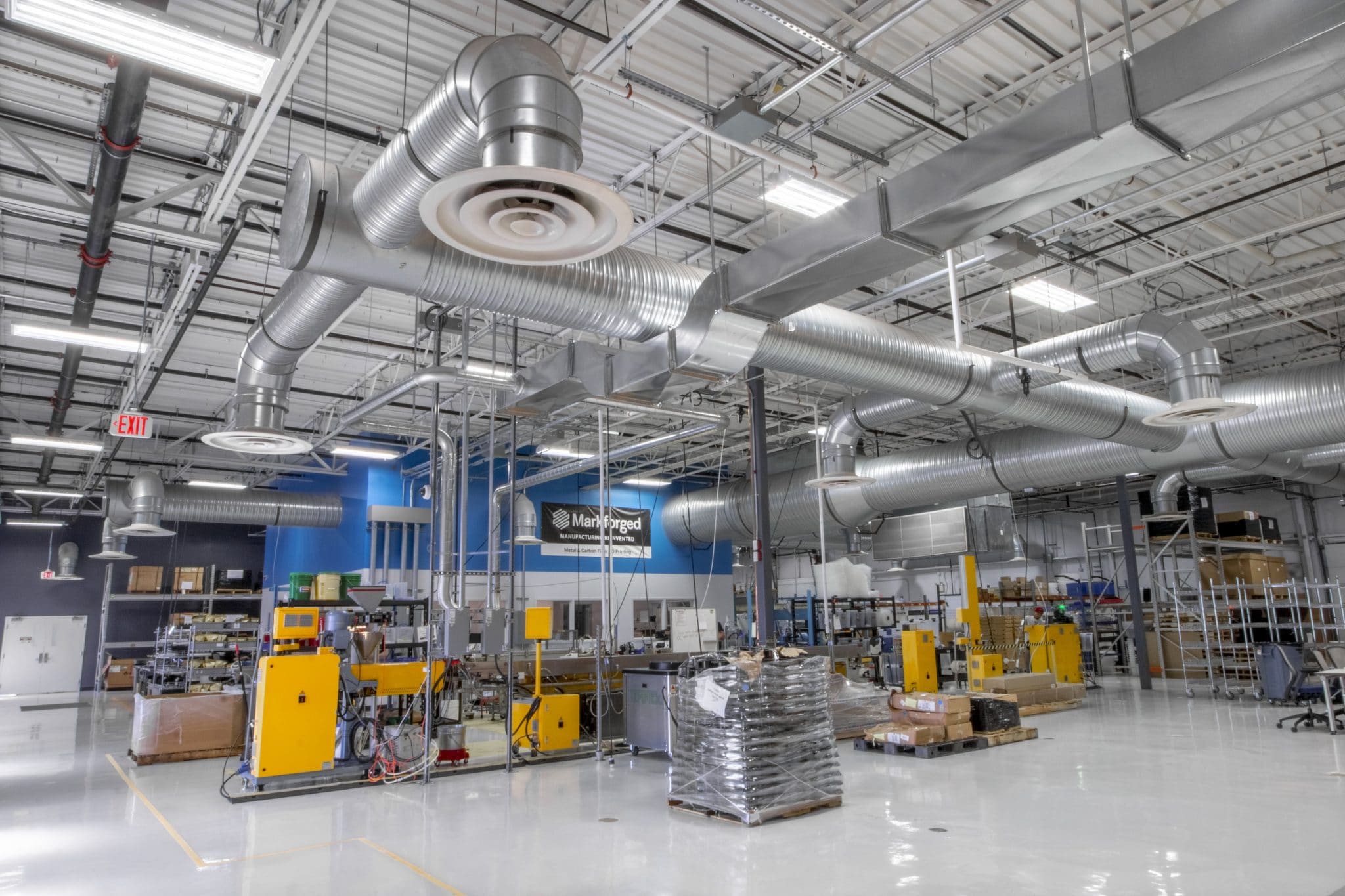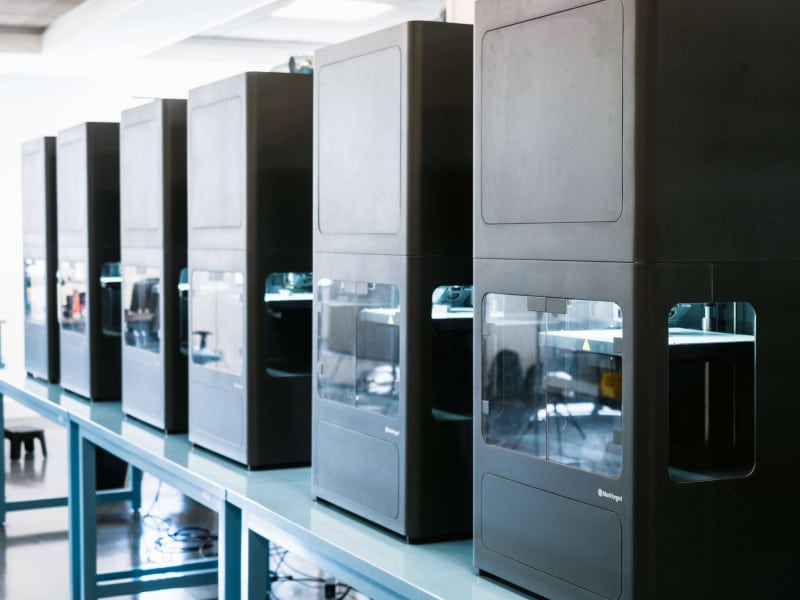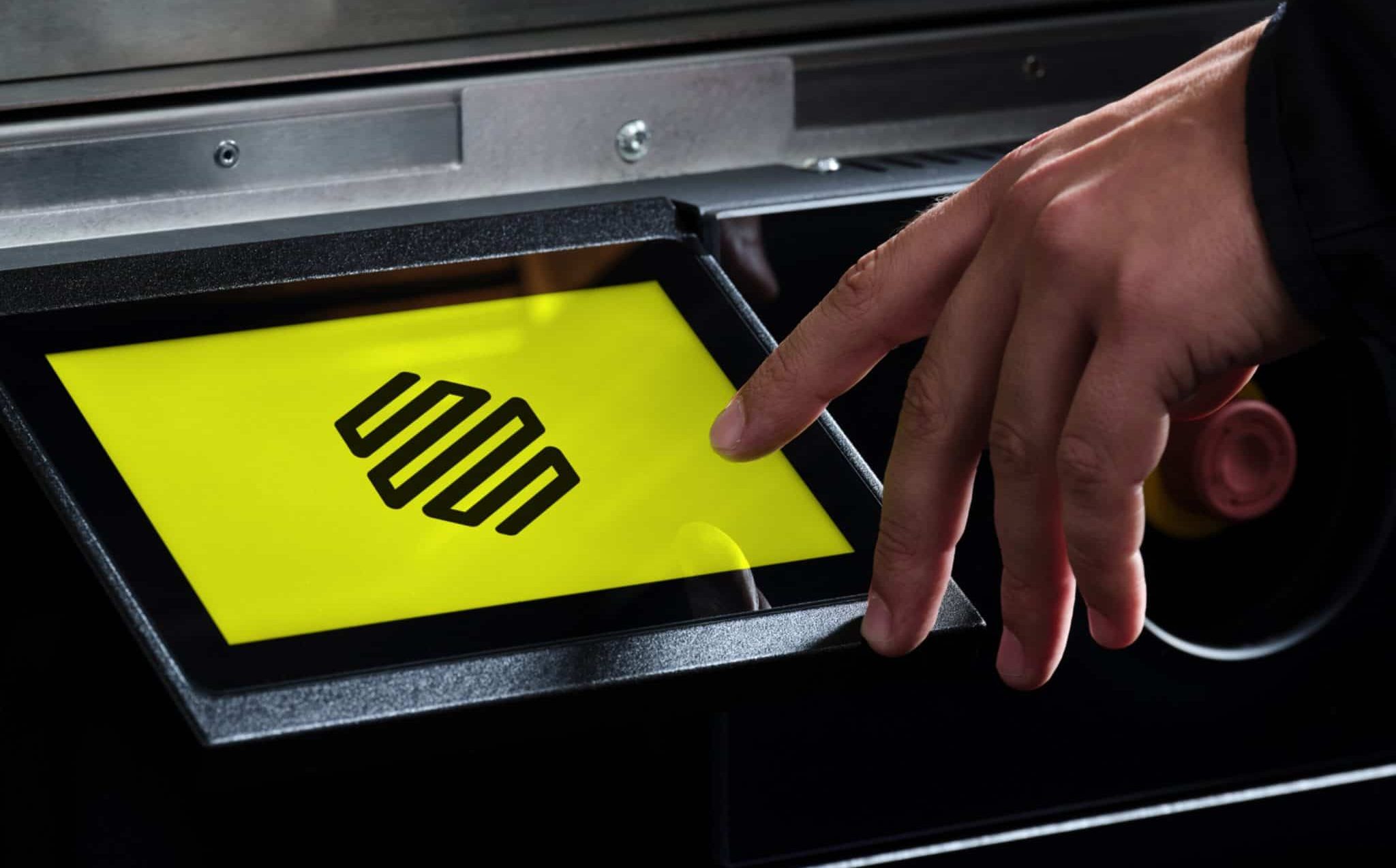After going public and trading on NYSE since July 2016, Markforged has been releasing detailed data on its performance. For over a decade, all 3D printing stocks have suffered from long periods of decreasing value interrupted by short bursts of very rapid growth. Markforged’s stock has been no different; and yet the company’s growth has been solid, regular and organic, with a “strong balance sheet and a track record of execution to our industry”, as Markforged CEO Shai Terem put it during the latest analyst call on Q1 2022 results when the company reported revenues of $21.9 million and 8.6% YoY growth. 3dpbm had the opportunity to speak with Mr. Terem about Markforged’s latest results, ongoing growth strategy and medium to long-term goals.
Bringing real value to AM
“Our focus,” Mr. Terem explained,” has always been on high-value, end-use manufacturing applications, printed at the point of need [to] solve today’s extreme supply chain challenges, resulting in a growing install base and leading gross margins. We are accelerating organic product innovation as planned and increasing our addressable market.
Today Markforged generates yearly revenues of about $100 million, which is a similar threshold to other 3D printing (and non-3D printing companies) that have gone public. That revenue level would make it a relatively small company by Wall Street standards while, at the same time, those who are familiar with the AM industry know that selling $100 million of 3D printers and 3D printing materials is no small feat.

“I would definitely describe us as a small company – Terem clarifies – and I do think that in the US markets, in public markets, the $100 million revenue threshold is probably the right place to be when going public.
“There are many disadvantages to being public such as, for example, what is going on today [i.e. tech stocks trading very low due to uncertainties and geopolitical instability] however the big advantage is that we were able to ‘catch the wave’ and secure over $300 million in funding,” the Markforged CEO explains. “This enabled us to have a very strong balance sheet, which meant we were able to accelerate our investment in R&D. Before that, as a start-up, we were working on one product at a time. Now we’re working on two and a half products at the same time. We can accelerate innovation and time to market of new technologies. And that’s the biggest advantage.”
The stock market for 3D printing-related stocks has been a roller coaster, with short outbursts of enthusiasm and long periods of decrease in value. Markforged is hoping to stand out or at least not contribute to this trend. “For at least the past ten years, since I’ve been working in this space,” Terem says, “this industry has been generally over-promising and under-delivering. This generated a hype cycle, with peaks such as those we had in 2013/14 and then again in 2021. some really good marketers were able to tell a really big story about exponential scaling. But the truth is that we are working to change manufacturing. And it takes time.”
From final parts back to prototypes?
From the start, Markforged has been very much focused on tools and direct final parts rather than prototypes. Customers use Markforged composites and metal solutions mainly to replace aluminum and steel parts. This has enabled the company to enter the segment of real high-value, mission-critical applications: for example, the parts that go into cars as well as into the manufacturing lines for cars. These parts cannot break outside of the planned maintenance cycle. “[This approach has enabled us to] have high gross margins, because our customers get a lot of value from replacing a $500 machined metal part with a $12 3D printed composite part.”
Given its strong focus on end-use parts, it came somewhat as a surprise that last March Markforged introduced Precision PLA as a material for its industrial-grade printers. It might have appeared as a reverse course of action but in fact, the use of PLA on industrial Markforged systems makes logical sense (Stratasys also recently introduced PLA for its systems). “The reason we introduced Precision PLA is that we were receiving requests from customers who were using our systems to build end-use parts, but they also needed to make prototypes and of course, our end-use materials were too expensive for that. They tried to use different printers but having the ability to do both the prototype and the part on the same printer is more effective.” Terem also anticipated that “we’re going to introduce more materials to give our customers the ability to do the entire life cycle on the same platform, at the same level of accuracy, for the entire lifecycle.”
As shown by the level of care when launching new materials and products, Markforged has been very cautious in communicating what its technology can do, producing extensive case studies and limiting the amount of pure brand marketing. “Of course, we do need to build the right brand awareness – Terem admits – but I think we need to do it while maintaining credibility and focusing on reliability. It’s very important for us that our customers trust us.”
The strategy has so far paid off. Terem revealed to 3dpbm that Markforged has over 12,000 active systems. All these systems, including both composites and metal solutions, are connected via Markforged’s Digital Forge, a digital manufacturing workflow composed of software, printers, and materials working seamlessly on a unified platform. The system is purpose-built to integrate into existing manufacturing ecosystem, eliminating barriers between design and functional part and helping to generate and analyze data about real usage.”
Manufacturing on Demand
Even though Markforged is a hardware company, software represents a major aspect of the company’s strategy. In fact, since going public, Markforged has made only one major acquisition: simulation software company Teton. “Teton helps our customers perform simulations and validations of parts so that they can test their strength before printing it out. In addition, it gives customers the ability to optimize between the time of the print, and the cost of the print, based on the materials used. When manufacturing production parts it is very important to help them balance between time, money and strength.”
Moving Markforged forward
The increased focus that the current US administration has put into AM – especially with an eye on reshoring production – could help companies like Markforged reach an even larger target of adopters. Terem agrees that now the time may have come, whereas technologies may not have been ready in the past. “In 2014, the Obama administration also highlighted the benefits of AM for the future of manufacturing in the State of the Union Address,” Terem says. “At the time, it created a lot of awareness and a lot of demand for 3D printers. The problem – he adds – is that in 2014 most of the technologies were still very heavy, expensive and complicated, or with significant material limitations.” Markforged’s solutions were made to address these challenges.
“Greg Mark founded the company in 2013 to offer affordable, easy to use industrial-grade composite parts,” Terem says. “That’s a big difference because now for $20,000 to $70,000 you can buy a Markforged system, plug it into the wall, take Markforged University training over the Internet and start printing industrial-grade parts. We can replace aluminum and even steel parts.
“Getting back to the impact of President Biden’s support, it could certainly help local administrations allocate more funding for companies to scale up their adoption of 3D printing. It could be a great opportunity for the US and I think that Markforged is uniquely positioned to reap the benefits of such initiatives because we have one of the most affordable and easy-to-use solutions on the market today.”
The global situation may present more challenges which Markforged now has to take into consideration since it does operate globally having kicked off its global expansion by opening its EMEA HQ in Dublin in 2019.
“Globally we are already seeing a general trend for deglobalization, with two main different drivers that impact AM adoption,” he tells 3pdmb. “One of them is around supply chain: most of the companies cannot wait for parts to get from one side of the world to the other. So everyone is trying to build stronger supply chains by printing parts when they need them. We have automotive customers that already have over 3000 parts in a digital library that they print on demand. So these parts are being printed on demand.
“The second is, unfortunately, especially in Europe with the Ukrainian crisis, a trend for companies and entire countries to want more independence in order to be more resilient. Companies are looking to be able to meet supply chain challenges worldwide, making sure that they will have the right part in the right time frame.”

Competition and TAM
Markforged is a relatively unique company in AM with a relatively unique technology but more competitors are now emerging. Anisoprint, a company based in Luxemburg, also offers continuous fiber-reinforced parts, while many other companies, including extrusion market leader Stratasys, are introducing machines that can print stronger parts using high-performance polymers and chopped fiber-reinforced materials. Even companies like HP are looking at metal replacements for industrial parts as a key adoption application.
“Surprisingly, we don’t see a lot of competition when we go into a deal,” the Markforged CEO reveals. “I would say that we see competition from other vendors in less than 30% of cases, most often in the medical segment. This means that most of the time – Terem clarifies – we compete against traditional manufacturing. We compete against machining and other traditional processes that have been around for decades and centuries.
What’s changing in the world now is that we see more and more decision-makers that have grown up with additive. Today, my daughter has SolidWorks courses in high school and they have a 3D printing lab. Every University now has a 3D printing lab. So the new generations of engineers and decision-makers are much more aware of these possibilities. And I think that will create a significant inflection point over the next few years.”
If Markforged now thinks so, it may very well be true.
* This article is reprinted from 3D Printing Media Network. If you are involved in infringement, please contact us to delete it.
Author: Davide Sher



Leave A Comment